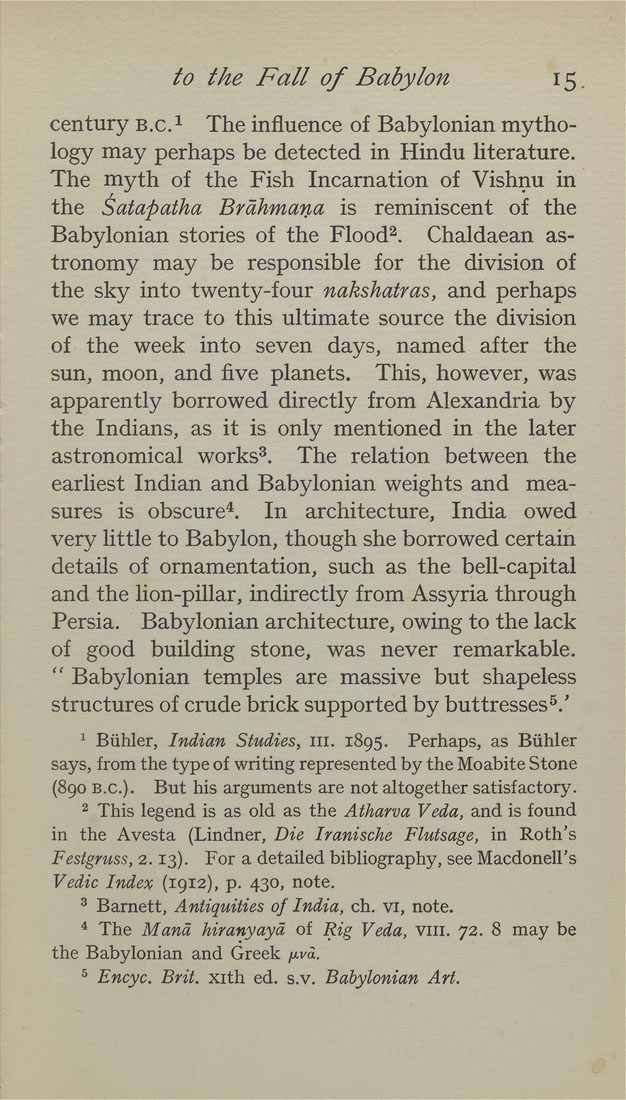to the Fall of Babylon
century b.c.^ The influence of Babylonian mytho¬
logy may perhaps be detected in Hindu literature.
The myth of the Fish Incarnation of Vishnu in
the ^atapatha Brdhmana is reminiscent of the
Babylonian stories of the Flood^. Chaldaean as¬
tronomy may be responsible for the division of
the sky into twenty-four nakshatras, and perhaps
we may trace to this ultimate source the division
of the week into seven days, named after the
sun, moon, and five planets. This, however, was
apparently borrowed directly from Alexandria by
the Indians, as it is only mentioned in the later
astronomical works^. The relation between the
earliest Indian and Babylonian weights and mea¬
sures is obscure*. In architecture, India owed
very little to Babylon, though she borrowed certain
details of ornamentation, such as the bell-capital
and the lion-pillar, indirectly from Assyria through
Persia. Babylonian architecture, owing to the lack
of good building stone, was never remarkable.
" Babylonian temples are massive but shapeless
structures of crude brick supported by buttresses^.'
^ Biihler, Indian Studies, in. 1895. Perhaps, as Biihler
says, from the type of writing represented by the Moabite Stone
(890 B.C.). But his arguments are not altogether satisfactory.
2 This legend is as old as the Atharva Veda, and is found
in the Avesta (Lindner, Die Iranische Flutsage, in Roth's
Festgruss, 2.13). For a detailed bibliography, see Macdonell's
Vedic Index (1912), p, 430, note.
^ Barnett, Antiquities of India, ch, vi, note.
* The Mand hiranyayd of Rig Veda, viii. 72. 8 may be
the Babylonian and Greek /xi/d.
^ Encyc. Brit, xith ed. s.v. Babylonian Art.
|








